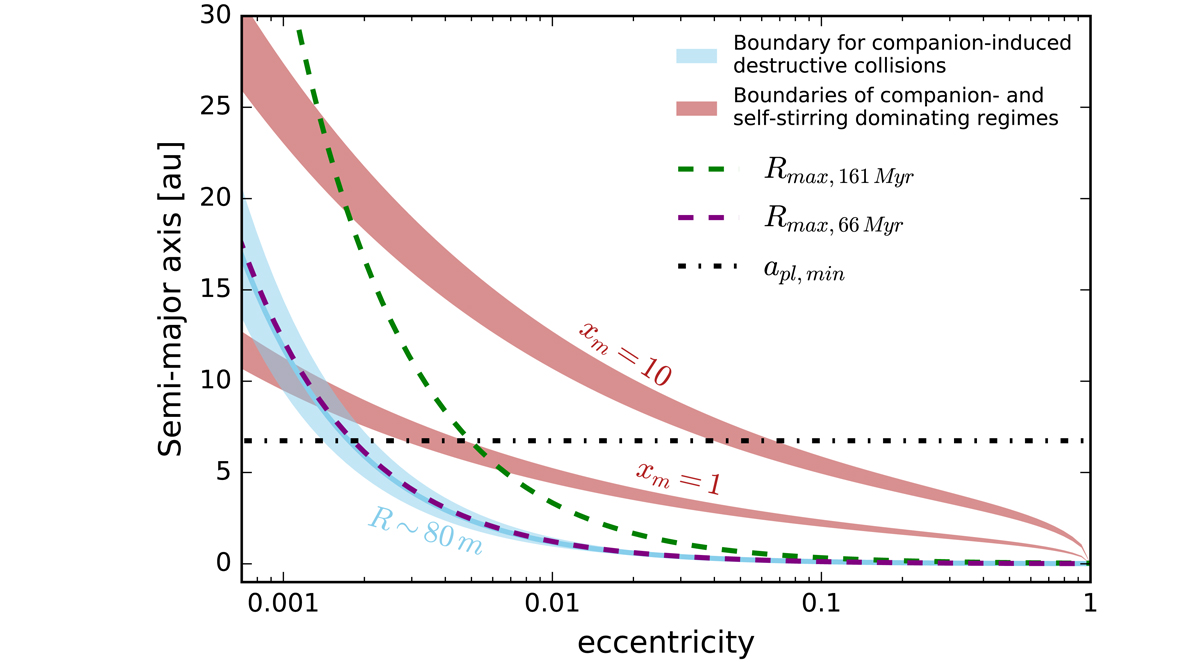Fig. 6.

Boundaries between a self-stirring and companion-stirring dominated disc. The light blue lines mark the (apl, epl) parameter space in which the companion would be able to stir planetesimals of size R to destruction velocities at a distance of 120 au. The shaded area around the solid light blue (R = 80 m) line takes into account the errors on the disc size and the stellar mass. The dashed purple line shows the Rmax for 66 Myr (close to the solid light blue line) and the dashed green line shows the Rmax value for the 161 Myr case. The shaded red areas indicate the boundaries between the self-stirring and companion-stirring dominated cases, for a fixed distance and companion mass, and for two representative xm values; accounting for errors on disc size, stellar mass, and companion mass (the areas encompass both age estimates). The horizontal dotted black line is the lowermost boundary of the minimum possible companion semi-major axis calculated in Sect. 4.3. The companion dominates the stirring process only for combinations of apl and epl lying above the light blue curve (the companion can stir planetesimals at the disc distance) and the red curve (the companion stirs the disc faster than the disc stirs itself).
Current usage metrics show cumulative count of Article Views (full-text article views including HTML views, PDF and ePub downloads, according to the available data) and Abstracts Views on Vision4Press platform.
Data correspond to usage on the plateform after 2015. The current usage metrics is available 48-96 hours after online publication and is updated daily on week days.
Initial download of the metrics may take a while.


